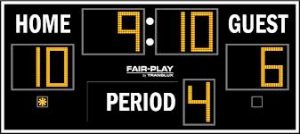Do You Hate Meetings?

In his book Traction, Gino Wickman discussed the development of effective and meaningful meetings. He reports that surveys, where people were asked to rate the effectiveness of meetings on a scale of 1 to 10, the responses were in the 4 to 5 range. Over the last year, I have been involved in a monthly leadership meeting with a client and have observed that attendance had become a struggle. In talking to several of the participants, I discovered that they saw little purpose in the meeting and often found something more important to occupy their time. Let’s share some of the ideas that Mr. Wickman suggests in structuring a Level 10 Meeting (TM).
Schedule and Organize
Meetings should be scheduled for the same time and same day. Meetings may be held daily, weekly or monthly. We once held daily meetings at the beginning of a day in a manufacturing plan. The meetings were conducted standing up and never lasted more than 20 minutes. The participants represented the various operation and service department and discussed critical issues and action plans to address each. Attendance became a habit and pulled the team together with a common set of priorities.
Be sure to start on time and finish on time. The football coach, Vince Lombardi, told his team that if you arrived for the meeting on-time you were late. There will be those who enjoy being in the meeting because it provides an opportunity for them dominate the conversation. They can cause the meeting to extend far beyond the intended to schedule. The chairperson needs to control that situation, suggesting that the subject be considered at a separate time and place.
Always have a written agenda. That agenda should either be distributed at or prior to the meeting. Hold to the agenda and don’t allow discussions to side track.
Segue
This is the introduction of the meeting. Distribute the agenda. Insist that all cell phones be silenced. Share any good news about clients, employees, or customers. Some like to take minutes, which you will see as unnecessary, because that type of information is included in the agenda for the current meeting. The agenda is to include:
- A review of the scorecard
- Status of key goals designated as Rocks
- Any “To-Do” items from the previous meeting
- Any “ IDS” (TM) items from the previous meeting (Identify, Discuss, Solve to be discussed later)
Scorecard

These are important quantitative values which require attention. In the non-profit world, in it might be the number of clients presently served or the number of new cases. In the business world, one might wish to report on the month to-date sales or the number of returned items. Any number which is on-track might not require any further discussion. Any number which is not on-track needs to be added to the list of discussion items under the IDS (TM) portion of the meeting.
Rocks Review
Rocks are those short-term 90 day goals which have been scheduled to be completed during the current quarter. By breaking goals down to 90 day increments, it gives emphasis to progress in the present, but waiting till the end of the year to determine completion. For example if the annual sales goal is $ 1,000,000, a good 90 Rock would d be $250,000. If the fund raising goal for a non-profit and that goal is to be achieved at a fund raising event in June, a First Quarter Rock might be to complete the marketing campaign for that event. Like scorecard items, and Rock which is not on schedule should be included in the IDS discussion.
To-Do List

During the previous meeting, a number of action items were generated. These are items that need to be completed by the following meeting. People or a team have taken responsibility for completing these tasks; and during this part of the meeting, they will be asked to report. If the action item is completed, it should be so noted. If not, it should be included in the IDS discussion.
The IDS (TM) Section (Identify, Discuss and Solve)
This will become the longest part of the meeting. Wickman recommends that of a 90 minute meeting, 60 minutes should be allocated to this activity. Discussion should include any To-Do List action items from the last week not completed, any scorecard items which are below expectations, and any Rocks which are falling behind. It may be found that this discussion may exceed even the 60 minute allocation, so prioritizing the discussion is critical. What needs to be discussed and solved first and what can wait till the next meeting?
Here is where the group’s problem solving ability needs to be exercised. How often as a manager have they brought you a problem and expect you to solve it? There are some managers that believe that to be their role, but in doing so, the opportunity to develop team members is lost. The first step is identifying the problem. Here it’s important to determine the real problem, not just here-say information or unfounded options. Give ample time for discussion and secure a wide range of options. Look to obtain real data and facts. Finally, develop a solution to the issue and develop a plan, with action steps, to solve it.
Conclusion
End by reviewing the “to-do” list for the next meeting and accountability assignments for the next meeting.
